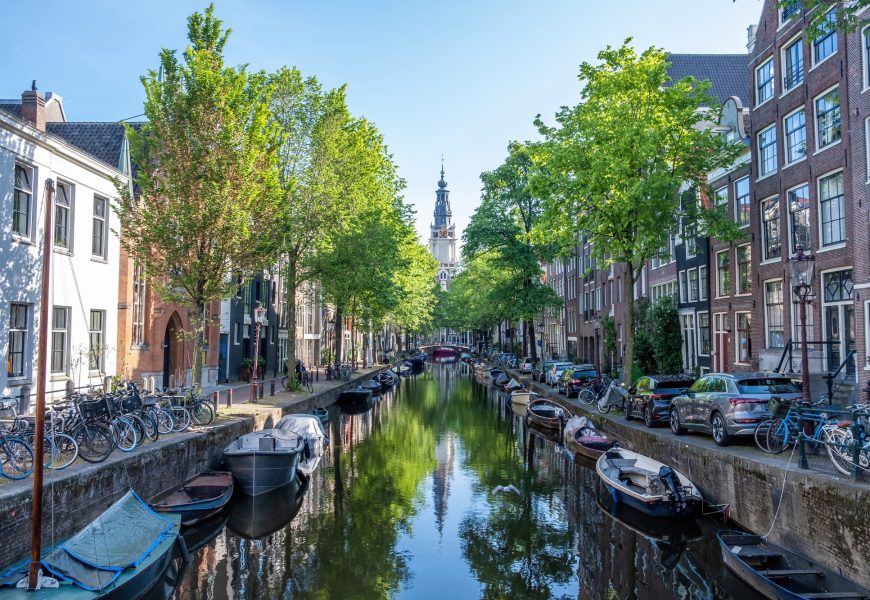The Netherlands is home to a diverse array of neighborhoods, each offering its own unique charm, history, and attractions. From the picturesque canals of Amsterdam’s Grachtengordel to the lively nightlife of Leidseplein, these areas provide a glimpse into the country’s rich cultural tapestry. Whether you’re exploring the historic streets of De Jordaan, marveling at the architecture of the Old Jewish Quarter, or soaking in the vibrant energy of De Wallen, each neighborhood tells its own story. With a mix of historic landmarks, bustling markets, serene parks, and modern developments, the neighborhoods of the Netherlands offer something for every traveler to discover and enjoy.
The Old Centre
This area, around the Dam and Nieuwmarkt and through the neighborhood known as De Wallen (Red Light District), is the oldest part of the city. It is densely populated and packed with things to see and do.
Dam Square
Built around 1270 between two dikes to prevent flooding, the Dam is now the central square between Rokin and Damrak. Main attractions include the Royal Palace, Nieuwe Kerk, National Monument, and Madame Tussauds. Amsterdam’s most commercial street, Kalverstraat, begins here.
Nieuwmarkt
Dominated by De Waag, a historic building that once served as a city gate and later as a weighing house, Nieuwmarkt is located in Amsterdam’s Chinatown, next to De Wallen (Red Light District). The square features numerous cafés and coffee shops.
Red Light District (De Wallen)
De Wallen, locally known as Rossebuurt, is one of Amsterdam’s main tourist attractions. Notable sights include Nieuwmarkt and De Waag, the Old Town Hall (now Hotel The Grand), De Oude Kerk, Museum Our Lord in the Attic, Chinatown with the Fo Guang Shan Temple, and a variety of sex shops, theaters, peep shows, and coffee shops.
Jordaan
Located west of the city center, beyond the major canals, this former working-class neighborhood is now a trendy area popular with artists, students, professionals, and tourists. It features tightly packed streets, canals, upscale boutiques, and restaurants. The Jordaan is celebrated in many Dutch songs.
Grachtengordel (The Canal Belt)
A series of semi-circular canals (“grachten”) encircle the old city center. Historic houses and warehouses line the canals, showcasing Amsterdam’s architectural heritage.
Plantage/Artis
Once a green leisure area outside the city walls, The Plantage became a prominent neighborhood in the 17th century. Highlights include the Jewish Historical Museum, Portuguese Synagogue, Hortus Botanicus (botanical garden), and Artis Zoo, which offer insights into the area’s history and nature.
Spui
The Spui quarter, in the heart of the old city, is a great starting point for exploring Amsterdam. The area blends chic restaurants, authentic brown cafés, and trendy fashion outlets with secondhand shops. Key attractions include the Flower Market, Begijnhof, and the Amsterdam Historical Museum.
Spiegelkwartier
This area is a treasure trove of over 70 art and antique shops, surrounded by characteristic Amsterdam facades. It’s a must-visit for anyone with an eye for unique and rare finds.
Old Jewish Quarter
The Old Jewish Quarter is home to the Old Portuguese Synagogue, Jewish Cultural Museum, Hollandsche Schouwburg, and Waterlooplein Market. Additional attractions include Artis Zoo and the Hortus Botanicus.
Leidseplein
Amsterdam’s nightlife hub, Leidseplein, offers performance venues, movie theaters, bars, cafés, restaurants, and hotels. It is always bustling with activity, making it a lively spot for visitors.
Rembrandtplein
Originally called Botermarkt (Butter Market), this square was renamed in 1876 when a statue of Rembrandt was unveiled. For over a century, it has been a vibrant nightlife center, featuring famous hotels, cafés, discos, and the iconic Tuschinski Theatre. Outdoor cafés provide a perfect spot to people-watch, especially during summer evenings.
The IJ Waterfront (Westelijke & Oostelijke Eilanden) | Hotels
Centered around Centraal Station and extending along both banks of the IJ River, this area is undergoing redevelopment. It features artificial islands, warehouses, and new apartments and offices. Attractions include the Maritime Museum, The Amsterdam, NEMO, and Muziekgebouw aan ’t IJ.


